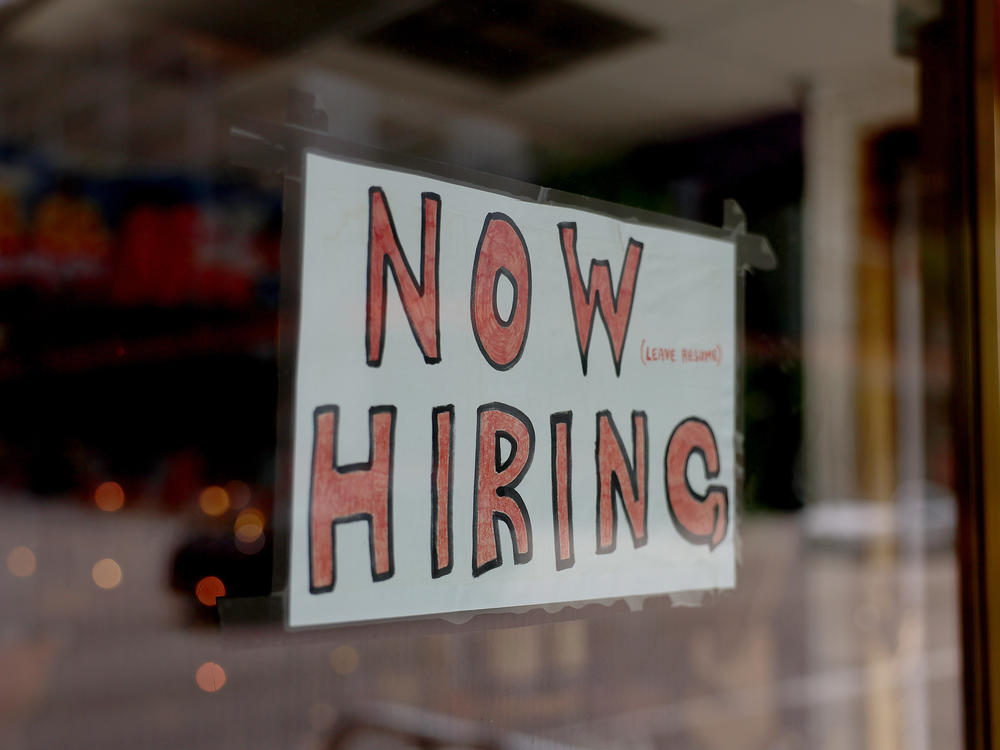Loading...
Section Branding
Header Content
The case for a soft landing in the economy just got another boost
Heard on
Primary Content
Odds of a soft landing may have just gotten a little better.
The latest employment report from the Labor Department shows job growth held steady last month, boosting hopes that the Federal Reserve may be able to curb inflation without triggering a sharp jump in unemployment.
U.S. employers added 187,000 jobs in July. While job growth has moderated, it hasn't come close to stalling, even after the Fed raised interest rates to the highest level in 22 years.
Here are five takeaways from the report.
Keeping up with population growth
Over the last three months, employers have added an average of 217,000 jobs per month.
That's down from an average of 312,000 jobs in the first three months of the year, but it's still a healthy pace of growth.
Employers are still adding more than enough jobs each month to keep pace with population growth.
Health care, hospitality and construction were among the industries adding jobs in July, while factories and transportation saw modest job cuts.
Historically low unemployment
The unemployment rate dipped to 3.5% in July from 3.6% the month before. The jobless rate has hovered in a narrow range for more than a year, hitting a half-century low of 3.4% in April.
Unemployment among African Americans hit a record low of 4.7% that month before rebounding to 6% in June — raising some concerns. In a relief, the African American jobless rate dipped again in July to 5.8%.
It's best to take those numbers with a grain of salt. The figures can be noisy because of the relatively small sample size.
People are earning more
Here's another bit of positive news: Wages are finally outpacing inflation, boosting workers' buying power.
Average wages in July were up 4.4% from a year ago. Wage gains have moderated in the last year, but inflation has cooled as well, so workers' paychecks now stretch farther.
For the twelve months ending in June wages rose 4.4%, while prices climbed just 3%. (The inflation rate for the year ending in July will be released next week.)
Coming off the sidelines
The number of people working, or looking for work, increased by 152,000 last month.
Importantly, the share of people in their prime working years (ages 25-54) who are in the labor force is growing. After hitting a two-decade high in June, it fell just slightly last month.
That's important, because a growing workforce allows the economy to expand without putting upward pressure on inflation.
And it's good news for women
Before the pandemic, women briefly outnumbered men on U.S. payrolls.
The ranks of working women fell sharply in 2020, when schools and restaurants were shuttered and many women were forced to leave work to look after family members or for other reasons.
Women's share of jobs has been slowly recovering, however, thanks in part to job growth in health care and education — fields where women outnumber men. (In contrast, the male-dominated manufacturing industry lost 2,000 jobs last month.)
As of July, women held 49.9% of all payroll jobs, up from 49.8% the month before.
Copyright 2023 NPR. To see more, visit https://www.npr.org.

